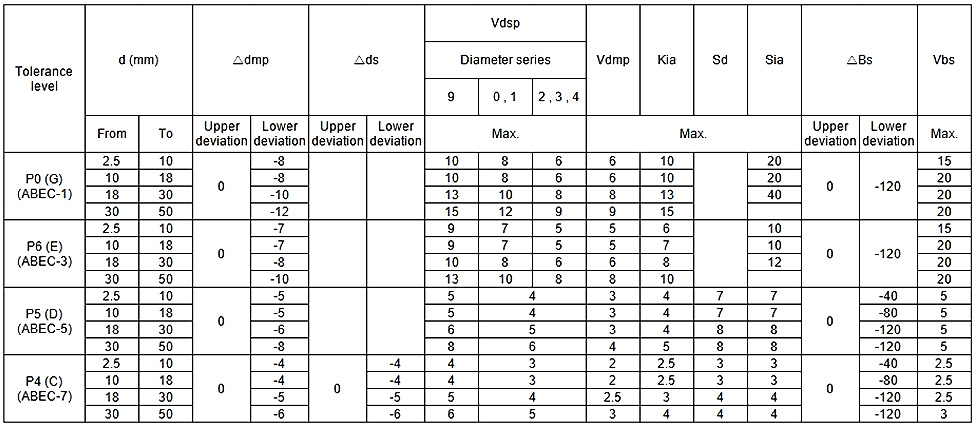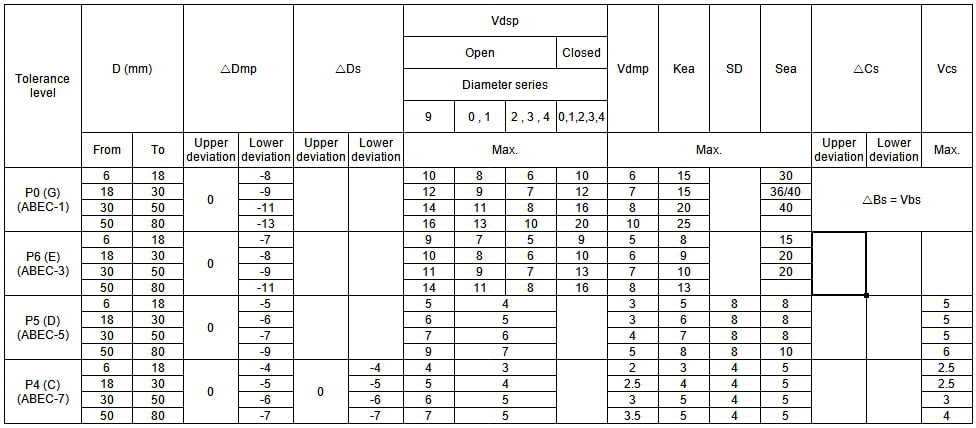Newsroom
What’s the bearings ‘ precision grade?
2023-10-20The accuracy of bearings is generally divided into: dimensional accuracy and rotation accuracy.
- Dimensional Accuracy (Related to the Installation on Shaft and Housing):
- Permissible Deviation for Bore Diameter, Outer Diameter, Width, and Assembly Width
- Permissible Deviation for Roller Group Inner Diameter and Outer Diameter
- Permissible Limit for Chamfer Dimensions
- Permissible Variation in Width


- Rotational Accuracy (Related to the Runout of Rotating Parts):
- Permissible Radial and Axial Runout for Inner and Outer Rings
- Permissible Lateral Runout of the Inner Ring
- Permissible Variation in the Inclination of the Outer Diameter Surface
- Permissible Variation in the Raceway Thickness of Thrust Bearings
- Permissible Deviation and Variation in Tapered Bore Diameter
The standard precision levels for bearings are classified into six grades: Grade 0, Grade 6X, Grade 6, Grade 5, Grade 4, and Grade 2. Bearing precision increases progressively from Grade 0.
The tolerance grade of a bearing is primarily determined by the rotational precision required by the shaft it supports.
- Grade 0: Widely used in general bearing systems where rotational precision exceeds 10μm. Common applications include the speed change mechanisms of ordinary machine tools, feed mechanisms, transmission systems of cars and tractors, ordinary motors, pumps, and the rotating mechanisms of general-purpose machinery and agricultural equipment.
- Grades 4 and 2: Used in ultra-precision instruments where rotational precision is less than 5μm or where very high rotational speeds are required. Examples include precision coordinate boring machines, gear systems of precision grinders, precision instruments and meters, and high-speed cameras.
- Grades 6 and 5: Applied in precision bearing systems with rotational precision between 5-10μm or where higher rotational speeds are required. For example, bearings used in ordinary lathes (Grade 5 for the front support and Grade 6 for the rear support), more precise instruments and meters, and precision rotating mechanisms.


